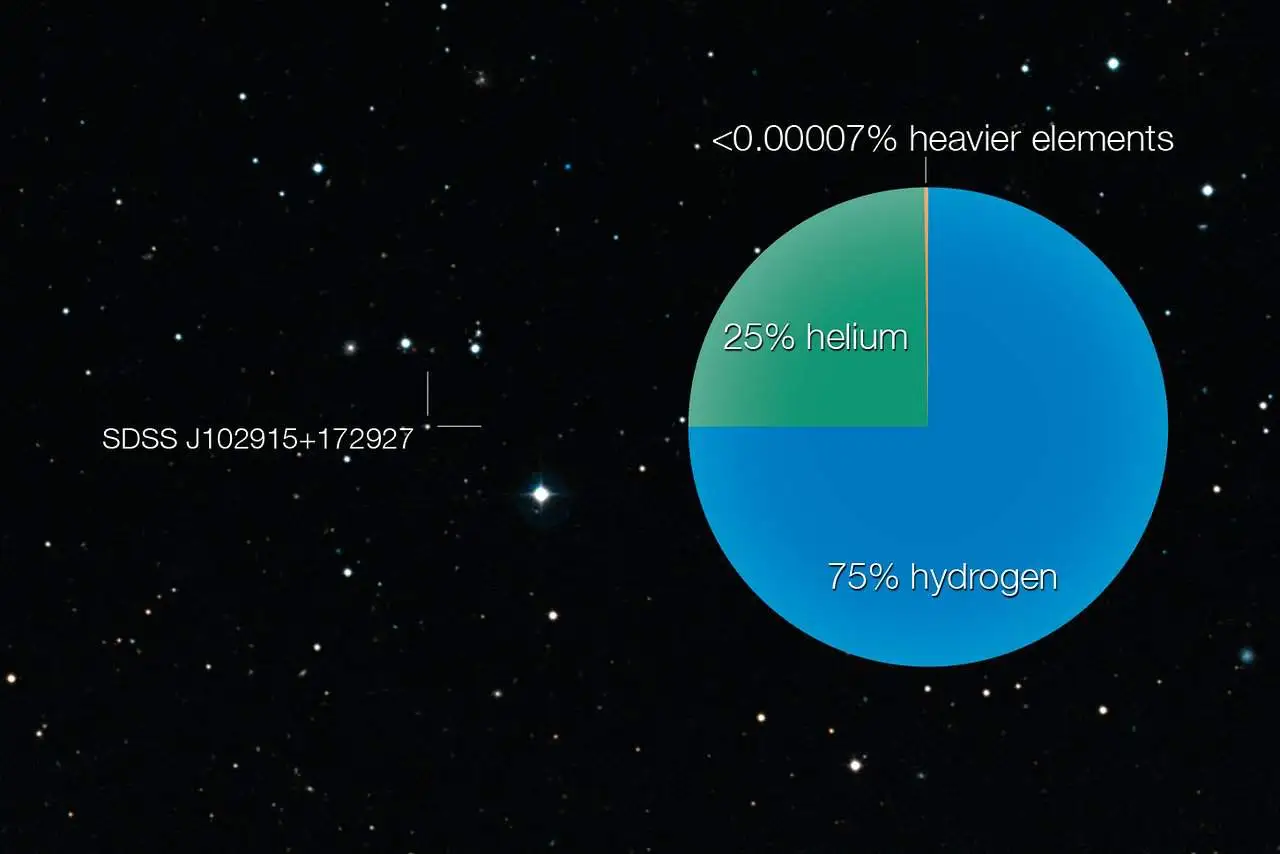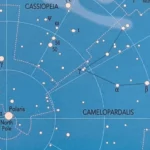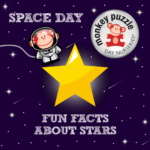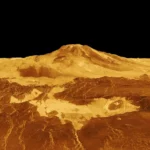Calling all astronomy enthusiasts! Get ready to blast off on an enchanting expedition through the vast cosmic playground. In this stellar adventure, we’ll dive into the enigmatic world of stars, where celestial giants waltz across the sky and pulsars pulse with captivating rhythms. Join us as we unravel the secrets behind these cosmic wonders, from their birth to their magnificent lifespans, and unravel the celestial dance of binary systems. We’ll peek behind the veil of their vibrant atmospheres, revealing them as more than just “balls of fire.” Brace yourself as we venture into the heart of our cosmic home, the Milky Way, teeming with countless stars and captivating celestial stories. Prepare to be awestruck as we explore the dazzling tapestry of the cosmos, where the wonders of the universe ignite our imaginations.
Amazing Facts About Stars
Stars, those twinkling diamonds scattered across the night sky, are more than just pretty lights. They’re massive balls of blazing hot gas, each with a unique story to tell. Our galaxy, the Milky Way, is practically overflowing with them – imagine trillions upon trillions of stars, each a sun in its own right! We can only see a tiny fraction of them without a telescope, but even those few spark a sense of wonder.
These celestial giants aren’t solitary beings; they’re born in massive cosmic clouds of gas and dust called stellar nurseries. Picture these nurseries as bustling maternity wards where stars burst into existence from collapsing clouds. Once born, they don’t just sit still. Stars embark on incredible journeys across the Milky Way, some forming clusters and others drifting solo. Interestingly, they aren’t evenly sprinkled across the galaxy; you’ll find more stars congregating near the galactic center, while the outskirts are a bit more spread out.
And talk about variety! Stars come in a dazzling array of sizes, temperatures, and colors. Some stars are absolute infernos, like the O-type stars. These scorchers can reach a mind-boggling 72,000° F (40,000° C). They live fast and die young though, burning through their fuel in just a few million years.
Stars are essential to the universe as we know it. They don’t just provide light; they’re the cosmic factories where heavier elements – the very building blocks of planets and even us – are forged. Think about that the next time you see a shooting star! By studying these distant suns, using powerful telescopes and instruments, we’ve learned so much about the universe and our place within it.
So, next time you find yourself under a canopy of stars, take a moment to appreciate their beauty and the incredible stories they hold. From their dramatic births to their crucial role in shaping the cosmos, stars remind us of the endless wonders waiting to be discovered out there in the vast universe.
The Life Cycle of a Star: From Birth to Supernova
The life cycle of a star is a captivating tale of cosmic evolution, a story filled with twists and turns, starting from humble beginnings and culminating in spectacular finales.
Stellar Nurseries: Where Stars are Born
Imagine a giant cloud of gas and dust, drifting through the vastness of space. These clouds, called nebulae, are like cosmic nurseries for stars. But how does a cloud just decide to become a star? It’s all about gravity. Gravity acts as the ultimate matchmaker in space. Over time, it pulls the gas and dust in the nebula closer and closer together. This clump of matter starts spinning faster and faster as it shrinks, like a spinning ice skater pulling their arms in.
As the clump gets denser and hotter, a baby star, known as a protostar, starts to form in the center.
Fueling the Fire: The Main Sequence
Eventually, the protostar’s core gets so incredibly hot and tightly packed that nuclear fusion ignites. This is where things get really interesting. Fusion is like the engine of a star. It’s the process of smashing hydrogen atoms together to create helium, releasing a tremendous amount of energy in the process. This energy is what makes the star shine so brightly!
Our very own Sun is a great example of a star in this stable phase, happily fusing hydrogen in its core. Astronomers call this phase the “main sequence.” Stars can spend millions, billions, or even trillions of years in this phase, depending on their size. It’s like the prime of their lives!
The Cosmic Crossroads: Different Paths to Stellar Death
Not all stars age the same way. It all depends on their mass, which you can think of as how much “stuff” they are made of. Smaller stars, like our Sun, are actually the most common type of star in the universe. They live long, steady lives, slowly using up their hydrogen fuel.
But massive stars? They’re like the rock stars of the cosmos – living fast and dying young! These celestial giants burn through their fuel much faster, leading to shorter but much more dramatic lives.
Fading Embers: White Dwarfs and the End of a Star’s Life
When a smaller star like our Sun eventually runs out of hydrogen fuel, it starts to cool down and expand, becoming a red giant. Eventually, it sheds its outer layers, leaving behind a tiny, dense core called a white dwarf. This white dwarf is like the cooling ember of a once-bright fire.
Explosive Endings: Supernovae and the Birth of Stellar Remnants
Massive stars, on the other hand, go out with a bang! When they run out of fuel, they become unstable and collapse in on themselves, triggering a supernova, one of the most powerful explosions in the universe!
These supernovae are so bright that they can outshine entire galaxies for a short time. It’s like the grand finale of a fireworks show!
But the story doesn’t end there. Supernovae leave behind something incredible: either a neutron star or a black hole. Neutron stars are incredibly dense, like squeezing the entire mass of the Sun into a city-sized ball! Black holes are even stranger – regions of spacetime where gravity is so strong that nothing, not even light, can escape.
The Cosmic Circle of Life
The amazing thing about stellar life cycles is that they’re all connected. The elements created in the cores of stars during their lives, and especially during supernovae, are scattered throughout space. These elements eventually become part of new stars, planets, and even us!
So, the next time you look up at the night sky, remember that you’re not just looking at twinkling points of light. You’re looking at the past, present, and future of the universe, all playing out in a dazzling cosmic dance.
Types of Stars: A Guide to Stellar Classification
We’ve already talked about how diverse stars are, but how do astronomers actually categorize them? It’s like sorting sprinkles on a giant cosmic cupcake! One of the pioneers in astronomy, Annie Jump Cannon, developed an amazing system based on what we call “spectral lines”. Imagine a star’s light like a fingerprint— these lines tell us about its temperature and how densely packed it is.
This classification system groups stars into “temperature groups,” labeled O, B, A, F, G, K, and M. Think of it like going from a blazing blue-white O-type star (so hot it lives fast and dies young) all the way down to a cool and comfy red M-type star that can chill for billions of years.
But wait, there’s more! Stars also have different levels of “brightness power,” officially known as luminosity. It’s like comparing a tiny candle to a giant spotlight, even if they’re the same color. We rank these from the super-duper giant “supergiants” (Class I) down to the little “white dwarfs” (Class VII). This tells us how big and bright a star really is, adding another piece to our stellar puzzle.
To sum it all up:
- Spectral lines: These are like stellar fingerprints revealing a star’s temperature and density.
- Spectral classes (O, B, A, F, G, K, M): These groups sort stars from the hottest (O) to the coolest (M).
- Luminosity classes (I-VII): This tells us how inherently bright and large a star is, from supergiants (I) to white dwarfs (VII).
Star Systems and the Search for Exoplanets
Think of stars like bustling cities scattered across the vastness of space. Each one is unique, with its own collection of planets, moons, and even the occasional asteroid buzzing around. And just like our Sun holds court over our solar system, other stars are the centers of their own cosmic neighborhoods.
What’s really captured our attention lately is the hunt for planets outside our own little corner of the universe – we call these “exoplanets.” The search has become a bit of a scientific treasure hunt, and boy, have we struck gold! We’re finding all sorts: tiny, rocky planets not much bigger than Earth, and massive gas giants that dwarf even Jupiter!
These discoveries are like puzzle pieces, helping us understand how planets form and evolve. The really exciting part? We’re finding more and more planets that seem like they could have the right conditions for life. It’s enough to make you wonder who else might be out there!
Of course, finding these hidden worlds is no walk in the park. It takes some serious astronomical detective work. Here are a couple of the tricks astronomers have up their sleeves:
| Method | How It Works |
|---|---|
| Transit Method | Imagine a fly passing in front of a lamp. The light dims slightly, right? That’s what happens when an exoplanet passes in front of its star – we can detect that tiny dip in brightness. |
| Radial Velocity Method | This one’s all about gravity. Planets tug on their stars as they orbit, causing the star to wobble a little. We can measure that wobble and figure out if there are any hidden planets causing it. |
The search for exoplanets is like a journey into the unknown, and it’s changing how we see ourselves in the grand scheme of things. Each new discovery sparks more questions than answers, fueling our curiosity about what else might be lurking out there in the vast expanse of space. It’s a reminder that we’re part of something much bigger than ourselves, and there’s still so much left to explore!
Did you know that constellations are groups of stars that appear to form a pattern? For more fun facts about constellations, click here!
Did you know that stars are huge balls of hot gas that emit light and heat? For more fun facts about stars for kids, click here!
















